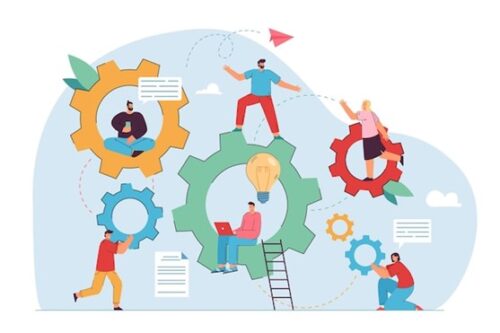Communication is the foundation of any successful relationship, whether it’s personal or professional. Effective communication requires more than just the exchange of words; it requires an understanding of how people think and process information. This is where HBDI comes in. HBDI, or Herrmann Brain Dominance Instrument, is a tool that helps individuals and teams understand their thinking preferences and how they communicate. In this article, we will explore the power of HBDI and how it can unlock the potential of diverse thinking to drive impactful communication.
Introduction to HBDI
HBDI is a psychometric assessment created by Ned Herrmann, which measures an individual’s thinking preferences in four quadrants of the brain: analytical, practical, relational, and experimental. The assessment is designed to help individuals and teams understand their thinking styles and how they approach problem-solving, decision-making, and communication. HBDI is based on the premise that everyone has a preferred thinking style, and by understanding and valuing diverse thinking, teams can improve their communication and achieve better outcomes.
Understanding the Four Thinking Styles of HBDI
The four thinking styles of HBDI are analytical, practical, relational, and experimental. Analytical thinking is characterized by a logical, data-driven approach to problem-solving. Practical thinking is more focused on the present and finding solutions that work in the real world. Relational thinking emphasizes empathy and understanding others’ perspectives. Experimental thinking is more creative and willing to take risks to find innovative solutions. Each thinking style has its strengths and weaknesses, and understanding these can help individuals and teams work more effectively together.
Analytical thinkers excel at analyzing data and making logical decisions based on facts and figures. They are often detail-oriented and have a strong attention to detail. Practical thinkers are more focused on the here and now and finding solutions that work in the real world. They are often highly organized and efficient. Relational thinkers are great at understanding others’ perspectives and building strong relationships. They are often empathetic and great communicators. Experimental thinkers are creative and enjoy taking risks to find innovative solutions. They are often passionate and enjoy exploring new ideas.
The Benefits of Diversity of Thought in Communication
Diversity of thought is essential for driving impactful communication. When individuals and teams have diverse thinking styles, they bring a range of perspectives and ideas to the table. This can lead to more creative solutions, better decision-making, and improved communication. Diversity of thought also helps to avoid groupthink, where individuals conform to the majority opinion rather than expressing their own ideas. By valuing diverse thinking and encouraging individuals to express their ideas, teams can achieve better outcomes and drive innovation.
How HBDI Enhances Communication Skills
HBDI is a powerful tool for enhancing communication skills. By understanding an individual’s thinking preferences, HBDI can help to improve self-awareness and self-management. This, in turn, can lead to improved communication, as individuals can better understand their own communication style and how to adapt it to different situations. HBDI can also help to improve team communication by providing insights into the thinking styles of team members. This can help individuals understand how to communicate more effectively with their colleagues and build stronger relationships.
Applying HBDI to Improve Teamwork and Collaboration
HBDI can be applied to improve teamwork and collaboration in a number of ways. First, it can help to identify the strengths and weaknesses of individual team members, allowing teams to assign tasks based on each person’s strengths. This can lead to improved efficiency and productivity. HBDI can also help to improve communication within teams by providing insights into the thinking styles of team members. This can help individuals understand how to communicate more effectively with their colleagues and build stronger relationships.
Case Studies of Successful Communication Using HBDI
There are many examples of successful communication using HBDI. One such example is the communication strategy used by a large technology company. The company used HBDI to assess the thinking styles of its communication team and then tailored its communication strategy to match the thinking styles of its employees. As a result, the company saw improved communication, increased productivity, and better outcomes. Another example is a healthcare organization that used HBDI to improve collaboration between its medical and administrative teams. By understanding each team’s thinking preferences, the organization was able to develop a communication strategy that worked for everyone and led to improved patient outcomes.
Tips for Becoming an Effective Communicator Using HBDI
To become an effective communicator using HBDI, individuals should start by understanding their own thinking style and communication preferences. This can be done by taking the HBDI assessment and reviewing the results. Individuals should then work to adapt their communication style to different situations and audiences. This may involve using different language or communication methods depending on the thinking styles of the people they are communicating with. Individuals should also work to understand the thinking styles of their colleagues and adapt their communication to match.
HBDI Training and Certification Programs
There are many HBDI training and certification programs available for individuals and organizations. These programs are designed to help individuals and teams understand the benefits of HBDI and how to apply it to improve communication and teamwork. HBDI training and certification programs typically include an overview of the HBDI assessment, training on how to interpret the results, and strategies for applying HBDI to improve communication and collaboration.
Leveraging HBDI for Impactful Communication in the Workplace
HBDI can be leveraged for impactful communication in the workplace by valuing diverse thinking, adapting communication styles to different situations and audiences, and using HBDI to improve teamwork and collaboration. By applying HBDI to communication strategies, teams can achieve better outcomes, improve productivity, and drive innovation. HBDI can also help to avoid communication breakdowns by providing insights into the thinking styles of team members and how to communicate more effectively with them.
Conclusion
In conclusion, HBDI is a powerful tool for improving communication and collaboration in the workplace. By understanding the four thinking styles of HBDI and valuing diverse thinking, teams can achieve better outcomes, improve productivity, and drive innovation. HBDI is not just a tool for improving communication; it is a way of thinking that can lead to improved self-awareness, self-management, and better relationships with others. By leveraging the power of HBDI, individuals and teams can unlock their full potential and achieve success in the workplace.
Are you interested in learning more about HBDI and how it can improve your communication skills? Contact us today to learn more about our HBDI training and certification programs.












